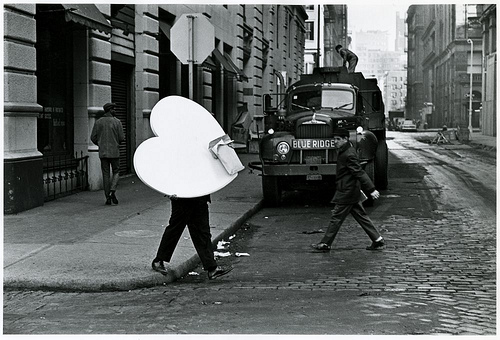 Whilst most of us now have £zero budget for most of our communications activity, we can still learn lessons from campaigns which do.
Whilst most of us now have £zero budget for most of our communications activity, we can still learn lessons from campaigns which do.
Hard and fast. I’m not talking about your job or your boss (although I’m sure they’re both). I’m talking about taking the lessons of the British Heart Foundation’s ‘Hands Only CPR: Hard and Fast’ campaign and using them in our comms.
You’re bound to have seen or heard about the campaign: it launched in November 2011 with ads featuring Vinnie Jones performing CPR to the tune of the Bee Gees brilliant (forgive me, but I’m a devotee of 70s disco) Staying’ Alive. Phase two of the campaign took place online two months ago with a new ‘mini Vinnie’ and case study ads.
It’s a brilliant example of a fully integrated campaign. It launched on in mid November 2011 on Twitter with promoted tweets in timelines and search, linking to the YouTube clip. On the same day, it launched an interactive subsite, game and iphone app. A day later, it used promoted trend on Twitter, although it may have been unnecessary: #hardandfast had already begun to trend organically and continued to do so. On the third day, the TV ads began to go out and the mainstream news picked it up. And lo, the British Heart Foundation created the perfect viral campaign. Then it rested (on that campaign at least) until November 2012 when phase two launched with the ‘mini Vinnie’ YouTube film (aimed at making young people confident enough to perform CPR), the case studies and an update to the app.
The results? It would be great to see some figures on change in perceptions but in their absence we’ll have to take what we can get. The original Vinnie Jones film has had 2,606,049 views, the mini Vinnie ad 125,217 and the case studies average 20,000 views each. The app has a five star rating and the Facebook page has 158,811 likes and 3,339 active conversations. The BHF says 28 people’s lives have been saved as a direct result of the campaign, and the real figure may be much higher.
I don’t know the cost of the campaign, but given the presence of Vinnie Jones, the extensive TV advertising and the engagement of ad company Grey London and IT company Positive Technology it is likely to run into the millions. Clearly none of us have a fraction of that to spend (or indeed anything at all in a lot of cases) but we can take some of the principles for use in our own campaigns, especially as we take over responsibility for public health:
- Make sure campaigns are properly integrated – across the organisation’s website, social media, local broadcast media and in print. This will ensure the target audience is hit from many sides, and key influencers who use social media will spread it to members of your audience who don’t.
- Keep it short – the Hands Only CPR campaign phased its activity across a few days, producing a concentrated effect, not a diluted one. Whilst this is the opposite of the traditional ‘drip drip’ approach for changing perception, it may actually be more effective in the age of social media, allowing other people to do the ongoing marketing through social networks.
- Launch on social media – where it’s relevant to the audience (and most audiences except the very old are increasing their use of social media). Even if use of social media is low in your area, many of the key influencers will use it and will pass the message on to others in more traditional ways.
- Keep it clear – have a single, clear message that people understand and know what they are supposed to do as a result. This sounds obvious, but all too often we change, soften or alter our message to meet the demands of services and politicians, and lose its potency as a result.
- Make it funny – the hardest challenge of all. But don’t be afraid to experiment and go near the knuckle. Campaigns work when they resonate with the audience, rather than being so bland that they don’t resonate with anyone, and we shouldn’t be frightened of failure as long as we learn lessons.
Realistically our campaigns may not ever have the exposure of Hands Only CPR, but by keeping it simple, making it quick and responsive and, above all, having the cojones to take some risks, we may be able to get the local traction we all crave.
Julie Waddicor is Senior Campaigns Officer at Staffordshire County Council
